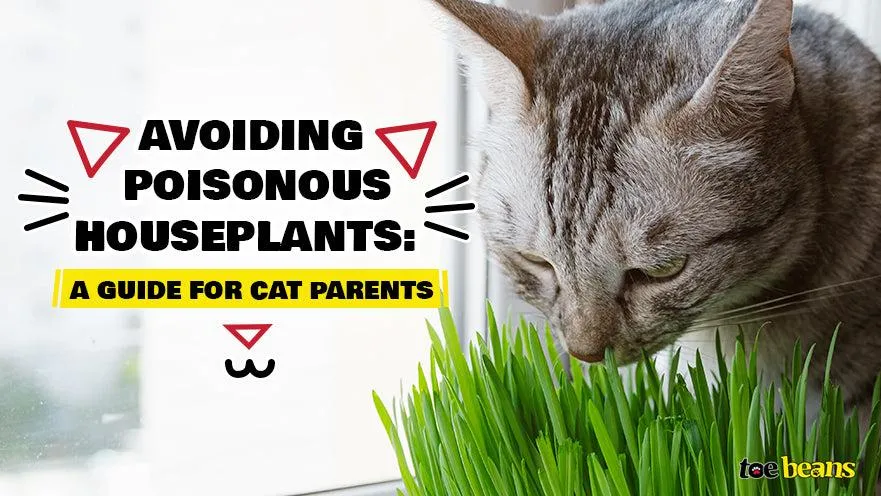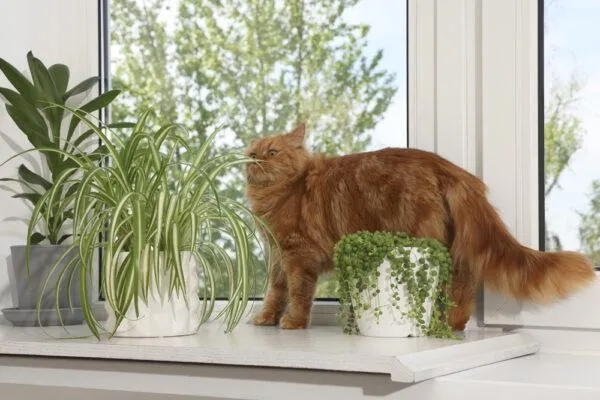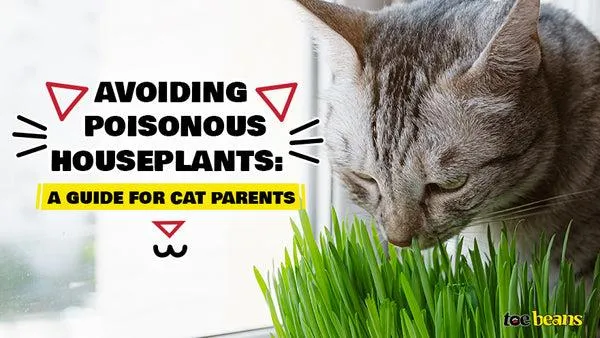Are Philodendrons Safe for Cats?
If you have cats at home and enjoy houseplants, you may be wondering whether philodendrons are a safe choice. As one of the most popular houseplants, philodendrons come in many varieties and can add beautiful greenery to any room. However, as all cat owners know, our feline friends like to investigate everything with their mouths. So in this article, I will explore the question of whether philodendrons are toxic if ingested by cats and provide tips on how to keep your plants and cats safe.
Philodendron Toxicity Level
Let’s start with the good news – most types of philodendrons are only considered mildly toxic to cats rather than severely toxic. The American Society for the Prevention of Cruelty to Animals (ASPCA) Animal Poison Control Center classifies philodendrons on their toxic plant list as an “Irritant.” This means ingesting parts of the plant may cause mild to moderate digestive irritation like vomiting or diarrhea.
Specifically, philodendrons contain calcium oxalate crystals that can irritate and possibly damage the esophagus or intestines if consumed. There is less risk of more serious poisoning compared to highly toxic plants. From my experience as a veterinary nurse, cats who ingest small amounts of philodendron usually show no symptoms at all or only mild GI upset that resolves on its own.
Varieties to Be Cautious Of
However, a few philodendron varieties may pose more of a risk, according to poison control experts. The rubber plant philodendron (Philodendron hederaceum) deserves special caution due to reports of more severe oral irritation and gastrointestinal effects in some cats. Also, keep the split-leaf philodendron (P. bipinnatifidum) out of reach, as some sources list it as moderately toxic rather than mildly.
In general, cats seem to be more tolerant of heartleaf (P. scandens) and Mexican breadleaf (P. erubescens) philodendrons. But it’s best to consider all varieties potentially harmful just to be safe, rather than counting on a specific one being “cat-proof.” No amount of any toxic plant is good for a curious feline!

Signs of Philodendron Ingestion in Cats
If you notice any of the following symptoms in your cat after being around philodendron plants, it’s a good idea to contact your veterinarian or an animal poison control hotline:
- Vomiting
- Diarrhea
- Drooling or difficulty swallowing from oral irritation
- Loss of appetite
- Lethargy
Symptoms typically appear within a few hours of ingestion if at all and should resolve on their own with no treatment needed for mild cases. But it’s important to monitor your cat and get prompt veterinary guidance in case more toxicity is involved.
Keeping Philodendrons and Cats Separate
The best way to keep your cats safe from philodendron ingestion is of course prevention rather than treatment. Here are some tips:
- Place houseplants up high out of paw and jaw reach, like on shelves or hanging baskets instead of low tables.
- Use sturdy bases that cats can’t tip over to access the soil or leaves.
- Opt for pet-proof potters with drainage holes too small for little paws to fit inside.
- Consider a pebble tray under pots to discourage cats from using them as litter boxes!
- Close doors to plant-filled rooms when not supervising cat playtime.
- Regularly wipe down leaves and surfaces that may retain plant residue after watering.
With vigilance, you can train your cats to leave plants alone over time without stress or confinement. It just takes consistency and patience. I’ve used positive reinforcement by rewarding kitties with treats whenever they walk away from tempting greenery.
What If Ingestion Already Happened?
Occasionally, even with the best precautions, curious kitties just can’t resist that tempting leaf or nibble of soil. If you notice signs of philodendron ingestion, here are my recommendations:

- Stay calm and move the plant out of reach immediately.
- Induce vomiting only if a large amount was consumed within the past hour and under veterinary guidance.
- Offer your cat extra water and monitor closely for symptoms.
- Contact your vet or an animal poison control hotline for guidance.
- Be prepared to take your cat for emergency treatment if symptoms are severe like difficulty breathing.
In most mild cases, supportive care at home should be sufficient. But it’s important to notify your vet in case complications arise. There are also toxin binders or activated charcoal that may help if given promptly on a vet’s advice. Overall, basic first aid and vet supervision are generally all that’s needed to manage accidental philodendron ingestion in cats.
Creating a Pet-Safe Home Interior
If you want to keep philodendrons as houseplants but worry about your curious kitties, my recommendation would basically be – vet your whole indoor environment for pet hazards. Make sure to also keep any other potentially toxic plants, chemicals, or small decorative items well out of paws’ reach. With some prep work and ongoing supervision, you can absolutely enjoy houseplants and keep pets safe at home!
While no environment can be 100% cat-proof, doing your research on each item and following common-sense precautions will go a long way in keeping your furry friends healthy and happy. I hope this guide has helped answer your questions about philodendrons in particular. Let me know if you need any other pet safety tips!
Philodendron Plants Safe for Cats
| Plant | Toxicity Level | Safety Details |
|---|---|---|
| Philodendron hederaceum (Heartleaf Philodendron) | Non-Toxic | A popular houseplant that is cat-safe. Keep out of reach of cats who may chew on the leaves. |
| Philodendron bipinnatifidum (Lacy Tree Philodendron) | Non-Toxic | Beautiful trailing or climbing plant. Make sure cats cannot access newer growth, which may be tempting to chew. |
| Philodendron scandens (Sweetheart Vine) | Low Toxicity | Lovely heart-shaped leaves. Keep higher or out of reach of curious cats. |
| Philodendron selloum (Thaumatophyllum bipinnatifidum) | Low Toxicity | Large split leaf plant. Probably not appealing for cats to chew, but keep an eye out just in case. |
| Philodendron cordatum (Lacy Tree Philodendron) | Low Toxicity | Beautiful laciniated leaves. May be tempting for cats to chew so keep higher or out of reach. |
FAQ
-
Are philodendrons poisonous to cats?
While philodendrons aren’t considered highly toxic to cats, they aren’t a good plant choice if you have feline friends. If a cat chews on the leaves or swallows a piece, it could cause mouth irritation, vomiting, or diarrhea. So to be safe, keep philodendrons out of reach.
-
What are the signs of philodendron poisoning in cats?
If a cat gets into a philodendron, watch out for drooling, vomiting, poor appetite, or diarrhea. The cat might paw at or rub its mouth a lot. These are clues it may have munched on the plant. Check with your vet right away if you spot any of these symptoms after an encounter with a philodendron. The vet can help assess if treatment is needed.

-
Is it okay to have a philodendron if I have cats?
You can have a philodendron, but you’ll need to cat-proof it carefully. Keep it high up on a bookshelf or tall plant stand where kitty cannot reach – they can jump amazing distances! Also, cover the soil with pebbles or plastic to deter cats from using it as a litter box. With diligence, it’s possible to enjoy this houseplant even with curious feline friends underfoot.
-
Why would a cat be attracted to a philodendron?
While philodendrons are not particularly tasty to cats, they do have a natural instinct to chew on plants. Cats may be drawn to philodendrons due to curiosity or while exploring. Sometimes cats will nibble plants for stimulation or to relieve boredom. The broad, waxy leaves might also trigger a cat’s prey drive. So it’s best to view all houseplants as potential toys in a cat’s world.
-
What can I do if my cat eats part of a philodendron?
If you catch your cat in the act of chewing on a philodendron leaf or stem, remove the plant promptly. Then keep an eye on your cat and call your vet if you notice any signs of sickness. The vet may induce vomiting or recommend activated charcoal to absorb toxins in the gut. Luckily, philodendron poisoning is usually not life-threatening with proper care. Your cat should recover just fine.
-
Can philodendron leaves be safely used as cat toys or catnip substitutes?
While philodendron leaves don’t contain catnip, felines may still see them as toys. However, it’s best not to encourage plant-chewing behavior in cats even for play. The mild toxicity of philodendrons isn’t worth the risk as an imitation catnip. Instead, use cat-safe toys to channel your kitty’s energy in a harmless way. Leave houseplants for admiring, not mouthing!
-
What are some cat-safe houseplants I could get instead?
Cat-friendly greenery options include English ivy, spider plants, pothos, peace lilies and sansevieria – these are considered non-toxic. You could also try growing wheatgrass or barley grass on a tray – cats sometimes enjoy nibbling on edible greens. Just be sure to supervise kitty with any new plant to monitor how they react at first.

In conclusion, while philodendrons are not hugely toxic, it’s best to view them as off-limits for curious cats. With a little work making plants inaccessible and engaging your feline with toys instead, you can hopefully share your home safely with both leafy houseplants and furry friends. Just be extra vigilant any time cats and plants intersect!
